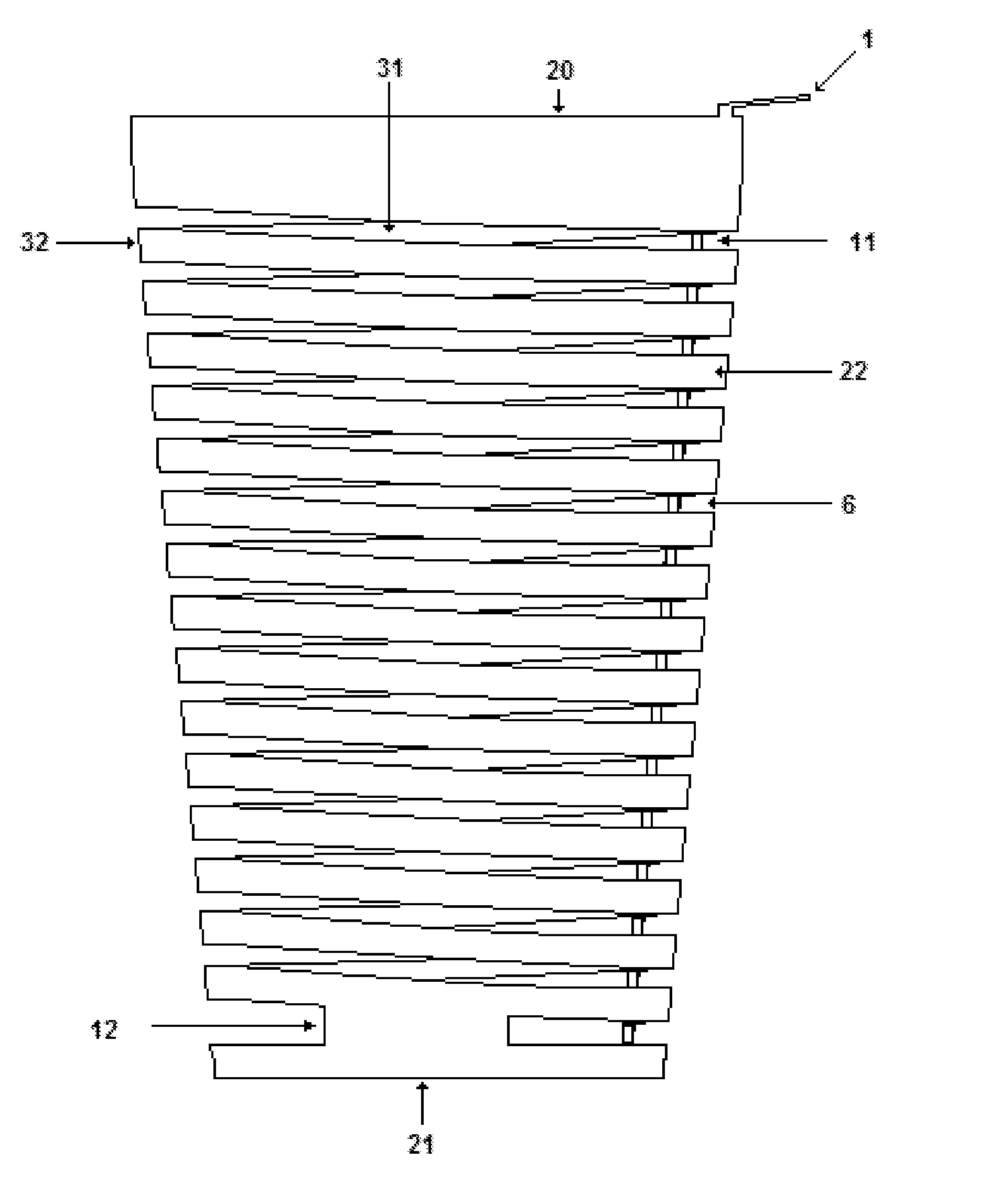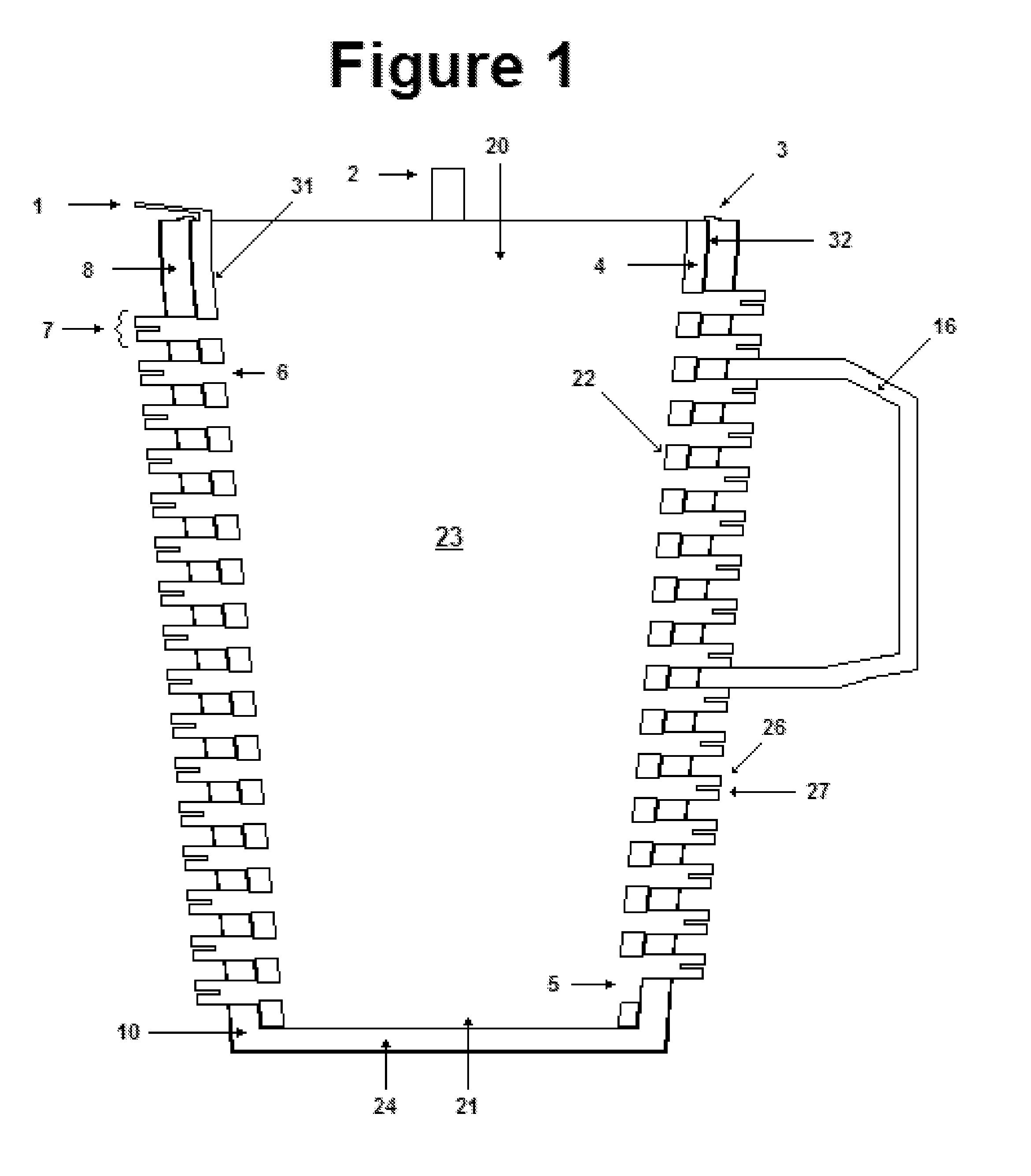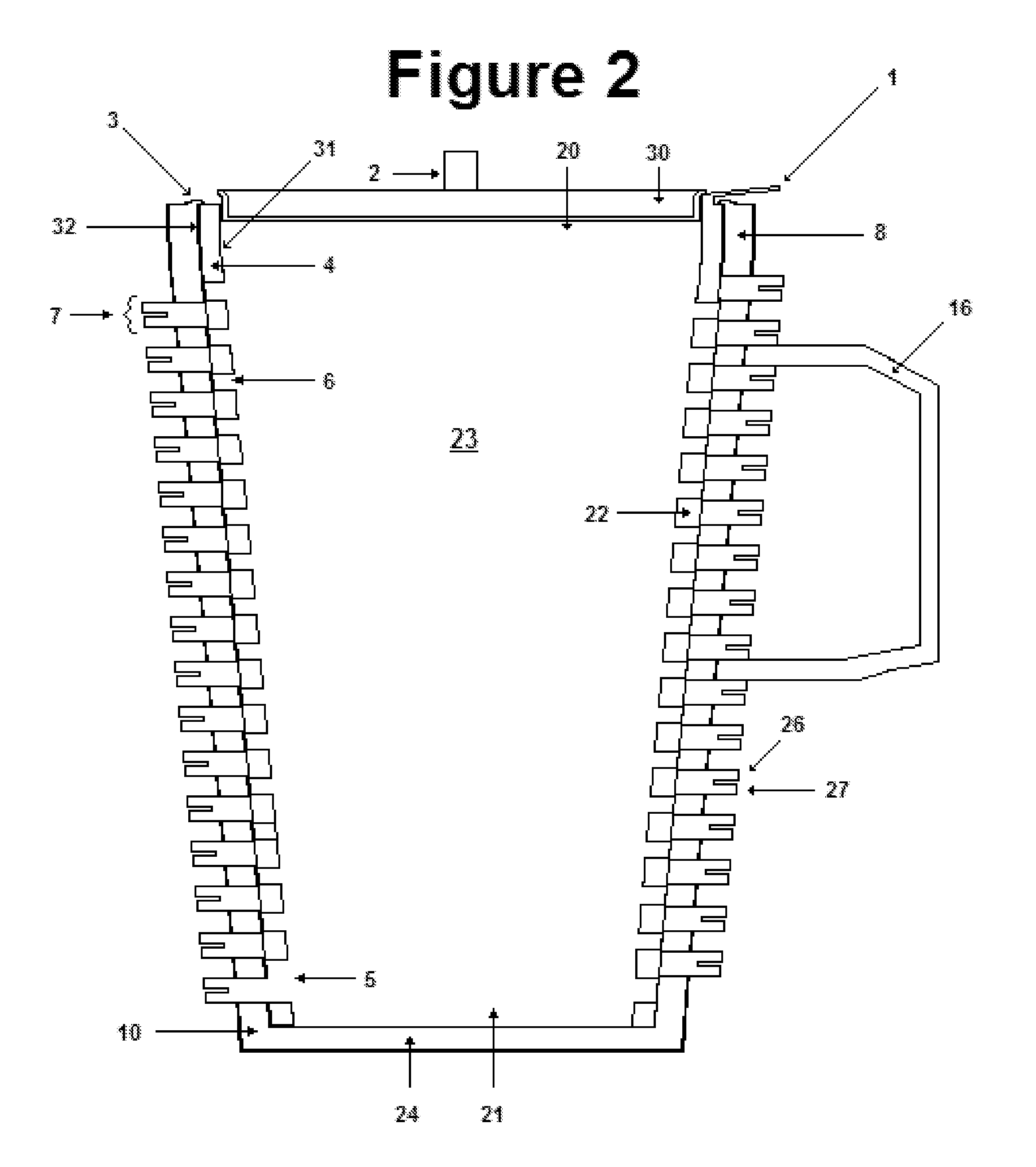Hot Beverage Container
a beverage container and hot beverage technology, applied in drinking vessels, domestic cooling devices, lighting and heating devices, etc., can solve the problems of long waiting time, significantly more complex and expensive use or manufacture, and inability to meet the needs of consumers, etc., to achieve convenient cleaning, expand the window of optimal temperature for consumption, and save production costs.
- Summary
- Abstract
- Description
- Claims
- Application Information
AI Technical Summary
Benefits of technology
Problems solved by technology
Method used
Image
Examples
Embodiment Construction
[0018]The beverage container of the invention is designed to overcome the shortcomings described in the prior art. It is a drinking container formed from two main parts—an inner core (4), shown separately in FIG. 3, and an outer shell (10), shown separately in FIG. 4. The other figures show the assembled cup, made up of the inner core (4) inside the outer shell (10).
[0019]Referring to the figures, the first par of the container is an inner core (4) with an open top (20), an open (as drawn) or closed bottom (21), and side walls (22) enclosing a central chamber (23). The inner core (4) is roughly cylindrical with a long gap (6) spiraling down from the inner surface (31) of the side walls (22) through to the outer surface (32) of the side walls (22), from the top (20) to the bottom (21). At the bottom (21) is a large gap (5) on both sides of the core (4) connected on the sides (12) such that the bottom tubing is exposed regardless of whether it is in consumption or cleaning orientation...
PUM
 Login to View More
Login to View More Abstract
Description
Claims
Application Information
 Login to View More
Login to View More - R&D
- Intellectual Property
- Life Sciences
- Materials
- Tech Scout
- Unparalleled Data Quality
- Higher Quality Content
- 60% Fewer Hallucinations
Browse by: Latest US Patents, China's latest patents, Technical Efficacy Thesaurus, Application Domain, Technology Topic, Popular Technical Reports.
© 2025 PatSnap. All rights reserved.Legal|Privacy policy|Modern Slavery Act Transparency Statement|Sitemap|About US| Contact US: help@patsnap.com



